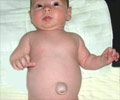A new study from the Johns Hopkins Center for Injury Research and Policy has found that fewer children required hospitalization

Drowning is the second leading cause of unintentional injury death of children age 1 to 19 in the U.S. For every pediatric drowning death, another two children are hospitalized for non-fatal drowning injuries.
"We found a significant decline in the rate of pediatric drowning hospitalizations, which is consistent with documented decreases in pediatric deaths from drowning," said lead study author Stephen Bowman, PhD, MHA, an assistant professor with the Johns Hopkins Center for Injury Research and Policy, part of the Johns Hopkins Bloomberg School of Public Health. "Our findings provide evidence of a true decrease in drowning-related incidents, rather than simply a shift towards more children dying before reaching a hospital."
The authors note that over the study time period, important public and private efforts to reduce the risk of drowning in children have been promoted, such as installation of four-sided pool fencing, the use of personal flotation devices, and the endorsement by public health authorities of childhood swim lessons. Reductions in bathtub drowning hospitalizations, most common among children younger than 4, may be a result of targeted injury prevention efforts aimed at parents and caregivers of young children that encourage vigilance in supervision and offer education on the risks of infant bathtub seats.
"Continued funding and support for these efforts offer the potential to further reduce drowning hospitalizations in children," said Bowman. Drowning accounts for over 1,000 pediatric deaths annually in U.S. and over 5,000 related injuries. Total lifetime costs associated with drowning were estimated to exceed $5.3 billion in 2000, including $2.6 billion for children ages 0 to 14 years.
To document the trends, the study authors used data from the 1993-2008 Nationwide Inpatient Sample (NIS) of the Healthcare Cost and Utilization Project, sponsored by the Agency for Healthcare Research and Quality.
Advertisement
Source-Eurekalert









